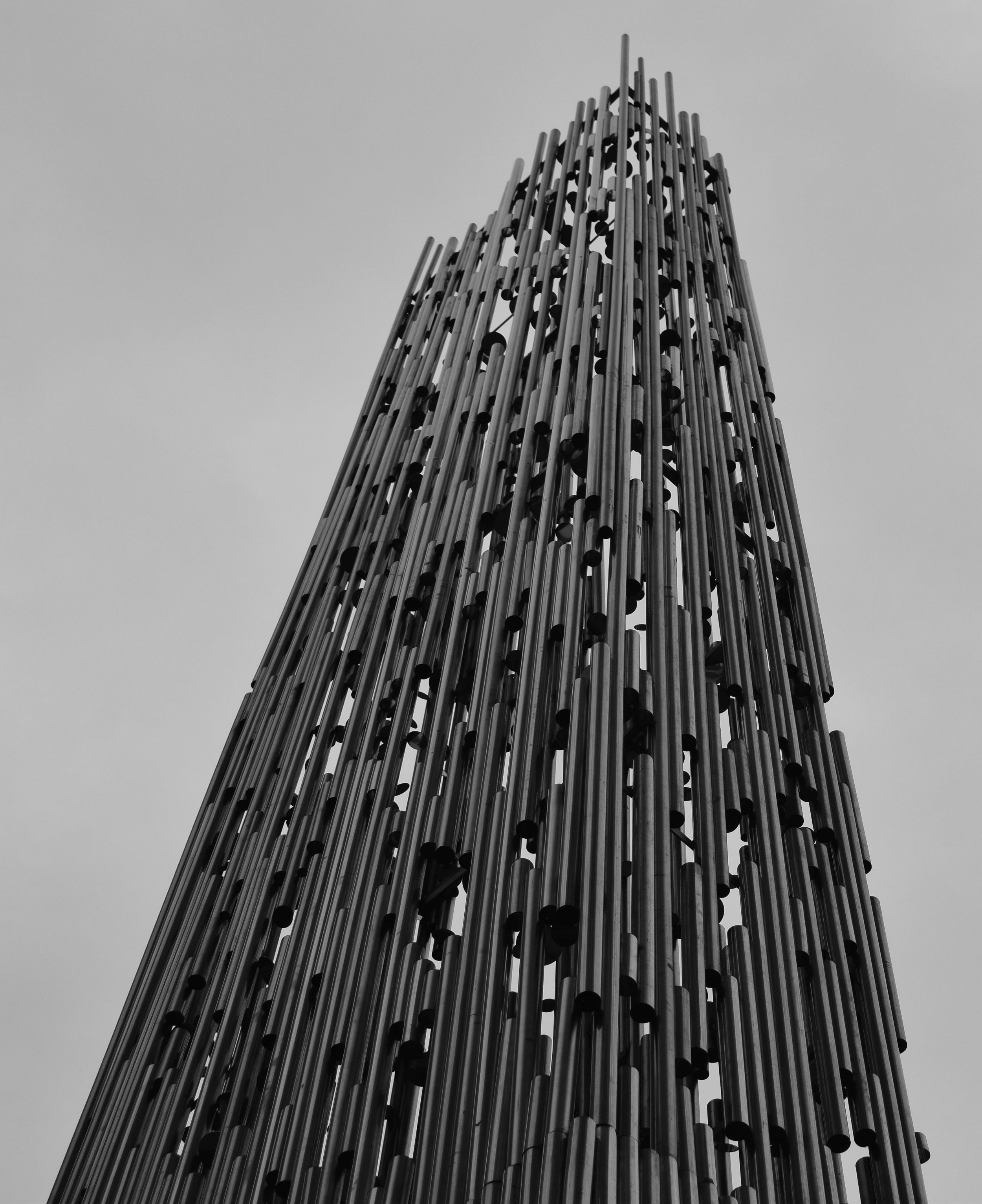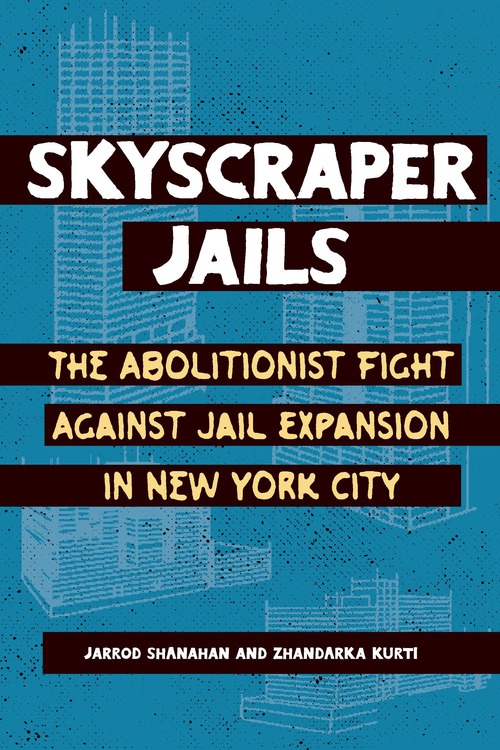On October 17, 2019, New York City Council passed a “historic vote” in favor of an $8.3 billion plan to close down the Rikers Island jail complex by 2026 and to replace it with skyscraper jail buildings in Manhattan, Brooklyn, Queens, and the Bronx. In the eyes of many progressive city council members, the gravity of this vote lay not in the unprecedented height of the new proposed buildings, destined to become the tallest jails in the world, nor in the immense scope of the jail construction project, the most elaborate single carceral-expansion effort in the city’s history. Instead, they believed history was being made in the steps these new jails represented toward reforming mass incarceration and achieving social justice.
The various punishment system reform initiatives we see unfolding across the United States reveal the willingness of some U.S. elites to dispense with some of the country’s most overtly brutal means of controlling the poor and the desire to shore up legitimacy by promoting a more humane capitalism. As scholars Jack Norton, Lydia Pelot-Hobbs, and Judah Schept warn us in The Jail Is Everywhere, in the current political terrain, many projects of carceral expansion are no longer cloaked in the rhetoric of “tough on crime” but instead in the language of benevolent reform.
Jail booster Stanley Richards, deputy CEO of the Fortune Society, has publicly scolded opponents of the skyscraper jails to stop talking about their foreboding facades or their imposing heights, as if these are somehow the jails’ defining features. “Like so much in life,” Richards writes, “it’s really what’s on the inside that matters.”
Heeding Richards’s advice, the most striking feature of the skyscraper jails’ design is the degree to which these buildings have been represented by their boosters as anything but facilities for large-scale human caging. We are invited to consider them as good neighbors, sites of life opportunity, anchors for commerce, and (in the words of one think tank) “sites of civic unity.”
Three recurrent and interrelated themes have assisted us in making sense of the disorienting spectacle of skyscraper jails erected in the name of social justice. The first theme is carceral humanism, which, as abolitionist scholar James Kilgore warns us, “recasts the jailers as caring social service providers.” A second, and related, theme is carceral citizenship. Distinct from the citizenship status afforded to formally free people, argue scholars Reuben Jonathan Miller and Forrest Stuart, “carceral citizenship begins at the moment of a criminal conviction and is distinguished from other forms of citizenship by the restrictions, duties, and benefits uniquely accorded to carceral citizens, or to people with criminal records.” The result is a unique type of subjectivity in the eyes of the state, meant to inhabit a web of interconnected systems of surveillance and control. The third, most prominent theme is what we call carceral utopianism. While this perspective might make obligatory gestures to state and civil institutions not functioning optimally—largely because of the vestigial racism held over from a less-enlightened epoch—carceral utopianism holds that these institutions can be corrected and made to work according to their stated intent of managing and reproducing an equitable democratic order for the benefit of all.
Carceral utopians need not dispute a single sentence of Michelle Alexander’s The New Jim Crow. In fact, such critiques have now become an important part of how punishment is reconfigured in the name of social justice. At the same time, carceral utopianism casts social institutions like police, courts, and carceral facilities as politically neutral, simply a set of tools among many that a society uses to improve itself. Echoing a pet theme of the Vera Institute, #CLOSErikers called for the “reimagining” of the city’s punishment system, as if the task at hand was a question of architectural innovation versus entrenched political forces keeping things the way they are.
At its worst, such reimagining is simply rebranding. At best, carceral utopianism refuses to consider the inherent class interests guiding policing and punitive policy, and is equally silent to the powerful political blocs these institutions have created, such as police and guard unions. Insisting that these institutions are broken, carceral utopians never consider that they just might be functioning exactly as they’re supposed to. Instead, they argue that the legitimacy of carceral institutions must be restored, and with it the legitimacy of the society in which they play such an essential part.
In the most systematic extrapolation of the new jails’ design and guiding principles, a visual collaboration of the progressive architecture nonprofit Van Alen Institute and the Independent Commission for New York City Criminal Justice and Incarceration Reform (better known as the Lippman Commission) entitled Justice in Design, the jails are pictured as “justice hubs,” multifaceted assets to any community lucky enough to receive one. The version of society offered by this brightly colored literature is akin to The Busy World of Richard Scarry, where a whimsical cast of characters negotiates daily life in an idyllic simulacrum of urban society as seen through the eyes of a child. The project’s process involved focus groups and tours of local jails, capped off by a contest for the best jail design, which solicited images of the new jails for which the project is now famous.
“A complex set of problems with overlapping histories and difficulties has produced a crisis in jails,” write the authors of Justice in Design. “In order to move forward, there will need to be significant efforts in several areas: political, public, programmatic, and economic. In each of these areas, we must continue to foreground the overarching idea that jails are at their foundation civic institutions that define who we are as a society.” The authors of this remarkable text are keenly aware of both the crisis engulfing Rikers and the broader crisis of legitimacy engulfing the punishment system in the United States, and, hence, its very social order. Their response is to fight for the legitimacy of the jail in U.S. society and to actually deepen its role in the social fabric.
Justice in Design, therefore, represents a radical penal philosophy, which argues for the justice hubs to assume a cohesive social role in communal life. The design team defines these facilities, determined to leave no buzzword behind.
Justice Hubs are facilities that create healthy, normative environments and support rehabilitation for incarcerated or detained individuals, while simultaneously providing neighborhoods with new public amenities. These facilities take into account the context of surrounding communities. The guidelines offer resources for all neighborhood residents, reducing the fear and stigma surrounding jails while providing shared amenities, such as community gardens, art studios, exercise facilities, medical clinics, and social services. Calling for on-site programs such as job training centers, community courts, a police department, and probation offices, the guidelines position Justice Hubs as public sites of civic unity with integrated routes for detainees to return to life in the city, restoring dignity to people who are incarcerated while making the criminal justice system more visible, accountable, and responsive.
Later in the text, the authors insist that the jails must be “perceived as part of the culture and integral to the identity of the community.” As prudent scholars, we hesitate to call this plan “fascist,” but nonetheless note that it seeks to craft a strong and cohesive civic identity through the reconciliation of private capital with a unified public interest, anchored in towering monuments to the might and benevolence of the security state.
The sentiment that jails ought to be central institutions of social reproduction in New York City neighborhoods recurs throughout the jail booster literature and is one of the defining features of the skyscraper jail campaign. The first ever report issued by the Lippman Commission, called A More Just New York City (2017), suggests that the jails should house “community meetings or public services like a library, a job training center, classrooms, as well as commercial and retail businesses.” A slideshow called “Borough Based Jail Master Plan” later circulated by the NYC Mayor’s Office of Criminal Justice to promote the skyscraper jails attempts to leverage this ideology against public outcry over their prospective height, imagining the public will admire the new jails as a “civic presence on [the] skyline.”
Despite these social justice trappings, there is of course nothing radical or even progressive about the idea that communities ought to revolve around incarceration. This has long been the de facto state policy in working-class communities, especially communities of color, in the United States. It is a trend that was significantly amplified in New York City and across the United States in the last five decades. Carceral utopianism grants all this, of course, but counters that these institutions have not been functioning properly, and to make them do so would be to realize social justice.
In his response to critics of the skyscraper jails, Stanley Richards argues for the necessity of new jail architecture to abet “culture change,” to make sure the abolitionist prediction—that the new jails will soon resemble the old ones—does not come true. The jails of Rikers, Richards argues, “help breed the culture of violence and danger” for which the complex is known. By contrast, the new jails can facilitate “culture change” through their design.
The interior design goals become clear: naturally lit, open, communal spaces that lend themselves to programming, direct service, and therapeutic priorities for those detained, while supporting correction officers with better work facilities, including gyms, respite areas, and more comfortable meeting spaces. By investing in an environment built to promote safety and overall health, a critical foundation is laid on which a new culture can be built.
Throughout the jail booster literature, reference is frequently made to the “culture of violence” phrase famously deployed by the Department of Justice in its 2014 report on the conditions of Rikers. Justice in Design argues that “living and working spaces can be enormously improved by changing the entrenched and embedded cultures through training and ongoing discussions with individuals living and working in jails.” In the Lippman Commission’s October 2019 plea to the city council to approve the skyscraper jails, it argued that “redesigning jails will not be sufficient, on its own, to create a better environment. Equally, if not more, important is changing the operational principles and culture at the Department of Correction”—changes that “cannot wait for the closure of Rikers. The process of culture change has to start today.”
For his part, Richards emphasizes that the necessary culture change “is not an issue of brick and mortar” alone, arguing that “the physical environment either supports or hinders culture change goals.” Without qualifying what this culture is or where it comes from—besides, that is, the architecture of the bad old jails begging to be replaced—Richards contends, “If the interior space designs are corrupted and allowed to recreate even a small measure of the institutional bleakness and inhumane isolation of Rikers we will truly and simply be trading one set of buildings for another.”
This sentiment is further echoed by longtime carceral bureaucrat Michael Jacobson (executive director of the CUNY Institute for State & Local Governance, former president of the Vera Institute of Justice, and a former commissioner of both the New York City Departments of Probation and Correction, under mayors David Dinkins and Rudolph Giuliani, respectively), who conceded to the New Yorker’s Maurice Chammah that the failure to effect “culture change” in the new jails would simply “create little Rikers around the city.” This important admission, made by a number of jail boosters, echoes the words of anti-jail activist Liz Blum: “A building is just a building.”
More from our decarceral brainstorm
Inquest, finalist for the 2025 National Magazine Award for General Excellence, brings you insights from the people working to create a world without mass incarceration.
Sign up for our newsletter to get the latest in your inbox every Saturday.
Newsletter
Culture change, then, appears to be the lynchpin of the entire skyscraper jails plan. Much like “community,” however, the term “culture” is commonly wielded as if it possesses a clear definition, yet is sufficiently malleable to mean just about anything—and hence, most often, signifies not much at all. But the jail boosters all speak of the culture of the city jail system as if the meaning of this term is not only readily apparent but sufficiently robust to explain virtually all of the problems that cannot be fixed by new jail construction alone.
In a lengthy article entitled “Beyond the Island: Changing the Culture of New York City’s Jails,” Jacobson and colleagues at the Institute for State & Local Governance provide the most sophisticated treatment to date of what exactly “culture change” means in the context of a jail system, and how it can be changed in the skyscraper jails. “Organizational culture,” the authors write, “consists of the beliefs, assumptions, and values that guide an organization’s operations and affect how its members think and act. Culture involves the unspoken ways that an organization solves its problems, and the assumptions and habits that members, including new members, share and adopt.”
So where does this culture come from? Jacobson and his coauthors are never quite clear, besides to formulate an almost bacterial theory of bad jails, which posits that cultures of violence grow absent the antiseptic of sound management, in the unsterilized climate of aging infrastructure, and are, thereafter, transmitted congenitally from one generation to the next.
In practical terms, the authors’ plan for “culture change” is much of the same police and prison reform panacea, repeated ad infinitum for the past decade: training, more training, and, failing that, retraining. Their entire vision revolves around populating the skyscraper jails with guards who are professionally trained and managed and therefore do not reproduce the violence and dehumanization of the present system.
This plan is alarmingly similar to the ideology underlying an earlier episode of progressive jail boosterism, which oversaw the construction of many Rikers facilities in the 1950s and ’60s under NYC Department of Correction commissioner Anna Kross. Like the jail boosters of today, Kross imagined that connecting Rikers to the land with a permanent bridge and erecting a growing network of rehabilitative jail facilities could be accomplished alongside a professionalization of the DOC to produce model institutions. When the culture did not change, however, the infrastructure remained. And here we are.
Since the dawn of the purpose-built prison in the late eighteenth century, incarceration has, more often than not, been justified as a humanistic endeavor. Hence Norton, Pelot-Hobbs, and Schept are correct to observe in The Jail Is Everywhere that “carceral humanism is a new expression of an older argument.” Today’s variant, they argue, is distinguished by the unique combination of neoliberalism, which has paired the racialized practices of mass incarceration and austerity, with “an emergent if shallow multicultural and bipartisan criminal justice effort.” This has in turn furnished the kind of social justice arguments for mass incarceration seen in the skyscraper jails and elsewhere across the United States.
Given that the rise, and transformation, of carceral humanism today is intimately bound up with the horrors of mass incarceration and an ongoing crisis of social reproduction, humanistic carceral projects can win political support by purporting to solve these scourges with the magic of jail construction. But the promise of carceral humanism—that jails and prisons can be places where people can access “care” and can serve as a medicinal salve on the broader social crisis—cannot be fulfilled, despite the best intentions of reformers. The history of the prison and jail in the United States has shown us that innovations and reforms are destined to fail at their purported task, and that all such efforts leave in their wake are more wretched facilities.
Adapted from Skyscraper Jails: The Abolitionist Fight Against Jail Expansion in New York City. Copyright © 2025 by Zhandarka Kurti and Jarrod Shanahan. Reprinted with permission from Haymarket Books.
Image: Marija Zaric / Unsplash



